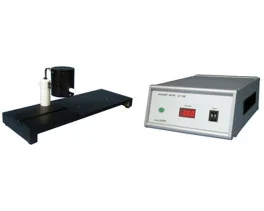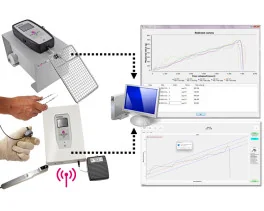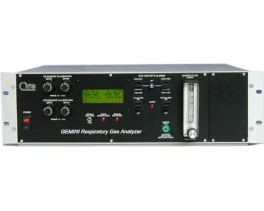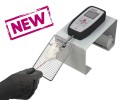Authors
J. Luszczki, M. Kominek, M. Florek-Luszczki, D. Tchaytchian, S. Kocharov et al.
Lab
Institute of Rural Health, Medical University of Lublin, Lublin, Poland.
Journal
Epilepsy research
Abstract
Experimental epileptology is mainly focused on searching for some active compounds suppressing seizures that could become efficacious antiepileptic drugs. Accumulating evidence indicates that succinimide derivatives would be good candidates for novel antiepileptic drugs. Therefore, the aim of this study was to determine the effects of N-hydroxymethyl-p-isopropoxyphenyl-succinimide (HMIPPS) on the protective action of four classical antiepileptic drugs (carbamazepine, phenobarbital, phenytoin and valproate) in the maximal electroshock-induced seizure test in mice. Tonic hind limb extension (seizure activity) was evoked in adult male albino Swiss mice by a current (sine-wave, 25mA, 500V, 50Hz, 0.2s stimulus duration) delivered via auricular electrodes. Acute adverse-effect profiles with respect to motor performance, long-term memory and skeletal muscular strength were measured along with total brain antiepileptic drug concentrations. Results indicate that HMIPPS administered intraperitoneally at 100mg/kg significantly elevated the threshold for electroconvulsions in mice (P<0.05). HMIPPS at doses of 12.5, 25 and 50mg/kg had no impact on the threshold for electroconvulsions in mice. Moreover, HMIPPS (50mg/kg) significantly enhanced the anticonvulsant activity of phenobarbital and valproate in the mouse maximal electroshock-induced seizure model by reducing their median effective doses (ED(50) values) from 23.25mg/kg to 16.82mg/kg (P<0.01; for phenobarbital) and from 259.3mg/kg to 189.7mg/kg (P<0.001; for valproate), respectively. In contrast, HMIPPS (50mg/kg) had no impact on the protective action of carbamazepine or phenytoin in the maximal electroshock seizure test in mice. HMIPPS (25mg/kg) significantly potentiated the anticonvulsant action of valproate by reducing its ED(50) value from 259.3mg/kg to 210.6mg/kg (P>0.05), but not that of phenobarbital, phenytoin and carbamazepine in the mouse maximal electroshock-induced seizure model. Pharmacokinetic experiments revealed that HMIPPS did not alter total brain concentrations of phenobarbital or valproate in mice. Moreover, none of the examined combinations of HMIPPS (50mg/kg) with carbamazepine, phenobarbital, phenytoin and valproate (at their ED(50) values from the maximal electroshock-induced seizure test) affected motor coordination in the chimney test, long-term memory in the passive avoidance task, and muscular strength in the grip-strength test in mice, indicating no possible acute adverse effects in animals. In conclusion, the enhanced anticonvulsant action of phenobarbital and valproate by HMIPPS in the mouse maximal electroshock-induced seizure model, lack of pharmacokinetic interactions and no potential acute adverse effects make the combinations of HMIPPS with phenobarbital and valproate worthy of consideration for further experimental and clinical studies. The combinations of HMIPPS with carbamazepine and phenytoin are neutral from a preclinical viewpoint.
BIOSEB Instruments Used:
Grip strength test (BIO-GS3)

 Pain - Thermal Allodynia / Hyperalgesia
Pain - Thermal Allodynia / Hyperalgesia Pain - Spontaneous Pain - Postural Deficit
Pain - Spontaneous Pain - Postural Deficit Pain - Mechanical Allodynia / Hyperalgesia
Pain - Mechanical Allodynia / Hyperalgesia Learning/Memory - Attention - Addiction
Learning/Memory - Attention - Addiction Physiology & Respiratory Research
Physiology & Respiratory Research




































 Pain
Pain Central Nervous System (CNS)
Central Nervous System (CNS) Neurodegeneration
Neurodegeneration Sensory system
Sensory system Motor control
Motor control Mood Disorders
Mood Disorders Other disorders
Other disorders Muscular system
Muscular system Joints
Joints Metabolism
Metabolism Cross-disciplinary subjects
Cross-disciplinary subjects CONFERENCES & MEETINGS
CONFERENCES & MEETINGS 